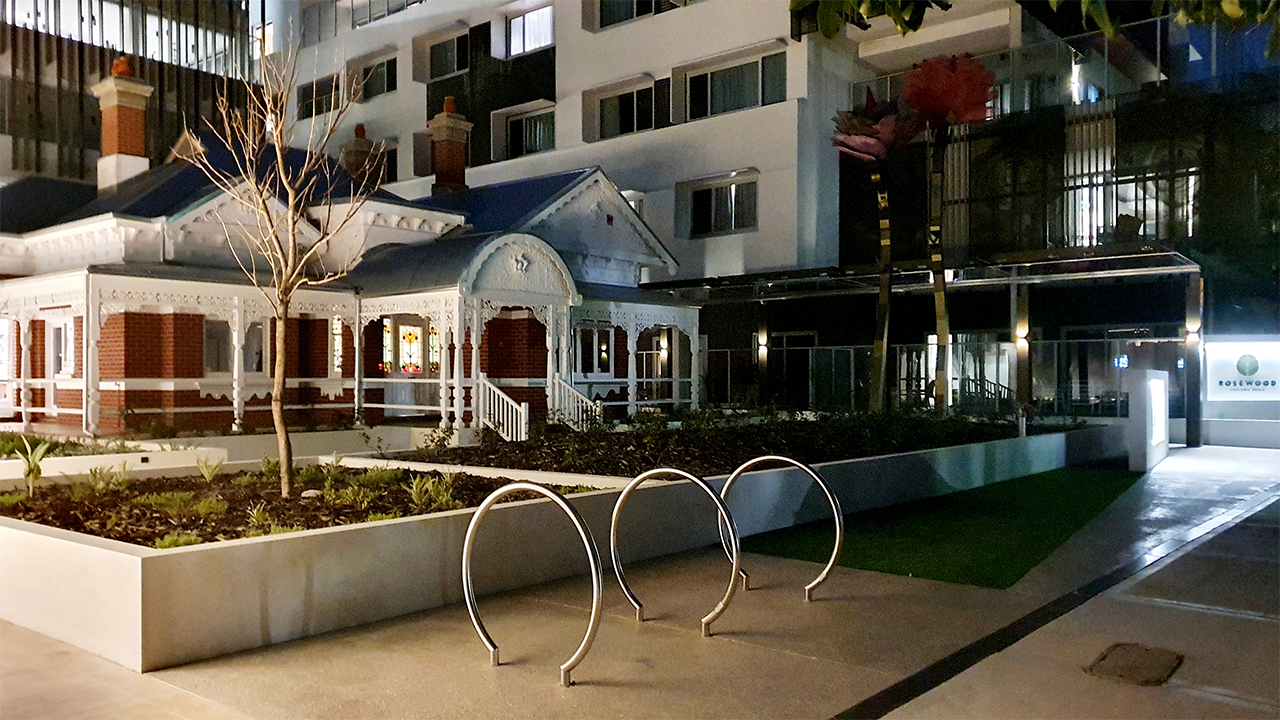The Rosewood Aged Care facility in Western Australia stands as a beacon of compassion and care, providing essential services to the elderly. In its commitment to ensuring the highest quality of life for its residents, accessibility and safety are paramount. Recognizing the need to accommodate individuals with visual impairments while maintaining a safe and welcoming environment, the Rosewood Aged Care facility partnered with Dottac, a leading company specializing in tactile solutions. Dottac’s innovative use of stainless steel tactile indicators played a pivotal role in enhancing the accessibility and safety of the facility, making it a more inclusive and secure home for its residents.
As an aged care facility, Rosewood is dedicated to offering holistic care to its residents, focusing on their physical, emotional, and social well-being. However, given the unique needs of elderly individuals, ensuring that the facility is accessible and safe for all residents is a top priority. This includes accommodating those with visual impairments, who may face challenges in navigating the facility independently.
Tactile indicators are invaluable tools for improving accessibility and safety in public spaces, particularly in facilities like aged care homes. They provide tactile cues and sensory information to individuals with visual impairments, facilitating independent navigation and reducing the risk of accidents. The incorporation of tactile indicators at the Rosewood Aged Care facility was a significant step toward achieving these goals.
Dottac’s involvement in the project began with a comprehensive assessment of the facility’s premises. This assessment aimed to identify key areas where tactile indicators could have the most significant impact. Collaborating closely with the facility’s staff and accessibility experts, Dottac ensured that the installation would be tailored to meet the unique needs of the elderly residents.
One of the primary areas of focus was the entrance to the facility. Dottac strategically installed stainless steel tactile indicators at the entrance, marking the transition from the exterior to the interior. These tactiles provided clear and tactile cues, making it easier for residents and visitors with visual impairments to locate and access the facility independently.
Inside the facility, tactiles were placed strategically to guide residents toward various areas, including communal spaces, dining areas, and their private rooms. These indicators formed tactile pathways, ensuring that individuals with visual impairments could navigate the facility with confidence. The raised dots and patterns on the tactiles provided tactile feedback, helping residents identify directional cues and transitions.
The choice of stainless steel for the tactile indicators was not only functional but also aesthetically pleasing. Stainless steel is known for its durability, making it suitable for high-traffic areas, and its resistance to corrosion ensures a long-lasting solution. The sleek and contemporary appearance of the stainless steel tactiles added a modern touch to the facility while maintaining a warm and welcoming atmosphere.
The facility’s layout included staircases, elevators, and handrails, which were essential for residents’ mobility. To address this, Dottac installed tactile indicators on staircases, featuring raised dots and tactile patterns that clearly defined each step. Elevators received similar treatment, with tactile indicators strategically positioned near elevator doors to aid residents in locating and accessing elevators independently.
The installation of stainless steel tactile indicators at the Rosewood Aged Care facility was a testament to Dottac’s dedication to accessibility and safety. These tactile indicators were more than functional; they symbolized a commitment to making the facility a comfortable and secure home for all residents, regardless of their abilities. The Rosewood Aged Care facility’s commitment to accessibility, as demonstrated through its collaboration with Dottac, transformed it into a more inclusive and supportive environment for elderly residents.
Furthermore, the tactiles significantly contributed to the safety and confidence of residents with visual impairments. By providing clear and tactile cues, they facilitated independent navigation and reduced the risk of accidents, enhancing the overall quality of life within the facility.
The innovative use of stainless steel tactile indicators at the Rosewood Aged Care facility in Western Australia was a significant milestone in enhancing accessibility and safety in a caring and supportive environment. The project not only made the facility more accessible but also emphasized the importance of thoughtful design and tactile solutions in creating a welcoming and inclusive space for elderly residents. The Rosewood Aged Care facility’s commitment to accessibility serves as a commendable example of how aged care homes can prioritize the well-being and independence of their residents while ensuring their safety and comfort.

